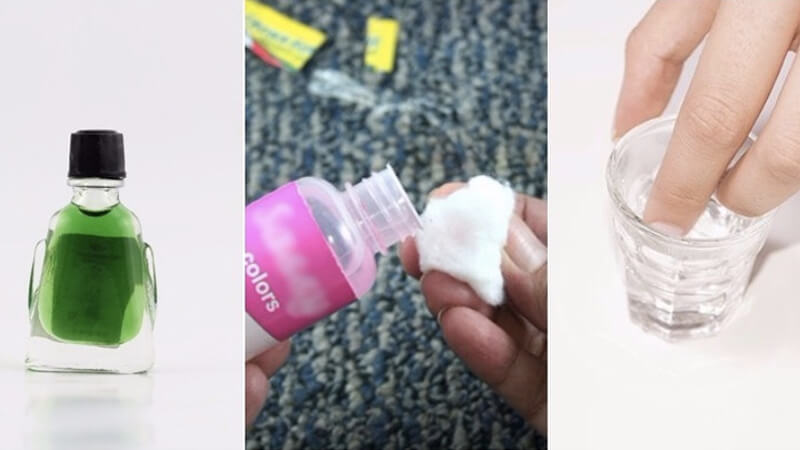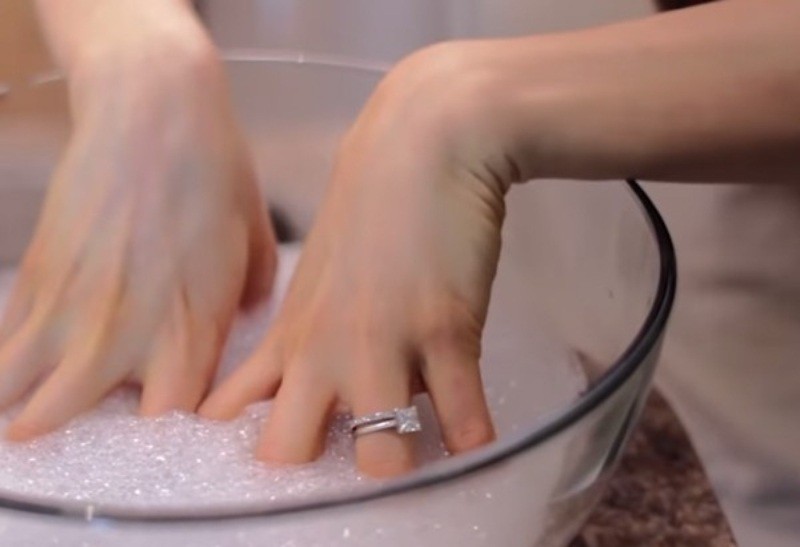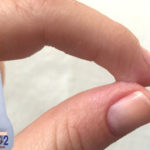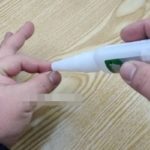The 502 glue has excellent adhesive properties. With its super strong adhesion, 502 glue is very popular in our daily life, it can stick to almost everything, whether it’s shoes, steel, colored metal, rubber, leather or plastic. During use, if accidentally glued with 502 glue on the hand, the fingers will be tightly stuck and unable to separate or move. In this case, if you try to force the fingers apart, the skin will definitely be damaged, even bleeding. Solve this difficult problem with some simple ways below.
Use wind oil combined with table salt

The liquid of 502 glue, when stuck on the skin, quickly forms a thin white layer, firmly attached to the skin surface. When peeled off, it may cause damage to related parts. If in contact with the eyes, 502 glue can cause heavy bleeding. When in contact with high temperatures, 502 glue can explode. If smelled for a long time, it can lead to decreased visual and auditory functions, motor disorders. That’s why, when using this type of glue, you also have to be extremely careful to avoid unnecessary accidents. When your hand is tightly stuck by 502 glue, don’t panic and look for a familiar bottle of wind oil in your family. Wind oil contains organic solvents such as ethanol and butylene glycol, which can effectively dissolve 502 glue. You just need to drop a suitable amount of wind oil into the gap between the two stuck fingers, use two fingers to rub back and forth while dripping.
When you see a little bit of space between the two fingers, add a little bit of table salt, granulated salt has a good friction effect. With friction and gentle kneading, the glue will gradually soften and peel off.
Use white vinegar
White vinegar is usually found in the kitchen as a seasoning, but it also has other uses. White vinegar can soften 502 glue and reduce its stickiness.
Very simple, first pour some white vinegar into a bowl. Then soak the glue-stuck finger in white vinegar for about a minute. Next, slowly rub the stuck fingers together to allow the white vinegar to penetrate deeper into the attached area. After a while, you will start to notice that your fingers begin to separate easily and the glue gradually dissolves.
Use soap water

First, prepare a little soap, the type of soap we usually use to wash hands. Then prepare half a bowl of hot water and use scissors to cut a small piece of soap into the bowl, not too much soap. After cutting, use chopsticks to stir the soap for complete dissolution in hot water.
Next, we directly dip the fingers stuck with 502 glue into the hot water with soap and soak. After soaking for a while, start gently rubbing the two stuck fingers together. After about three to four minutes of rubbing, our fingers will loosen, this method is simple and effective.
Hot water immersion method
Apply a wet hot towel to the glue or immerse the finger in hot water and wait for 10 minutes for the glue to soften gradually. It should be noted that any of the above methods should not pull the finger too hard to avoid skin damage.
If you accidentally get 502 glue on your finger, don’t panic and try one of the above methods to remove the glue from your hand. At the same time, be extremely careful when using 502 glue and store it in a place that is not easily accessible to children.
Solutions to Getting Glue Off Your Skin: 5 Easy Steps
Are you looking for ways to get rid of the infamous Keo Con Voi or 502 glue? This product is renowned for its high-strength binding capabilities for multiple surfaces such as wood, metal, and plastics – making it a popular choice for manufacturing and household purposes. Nonetheless, if Keo Con Voi finds itself on your skin, hands, or clothes, we will provide you with a few tips and tricks to help you remove it easily.


































